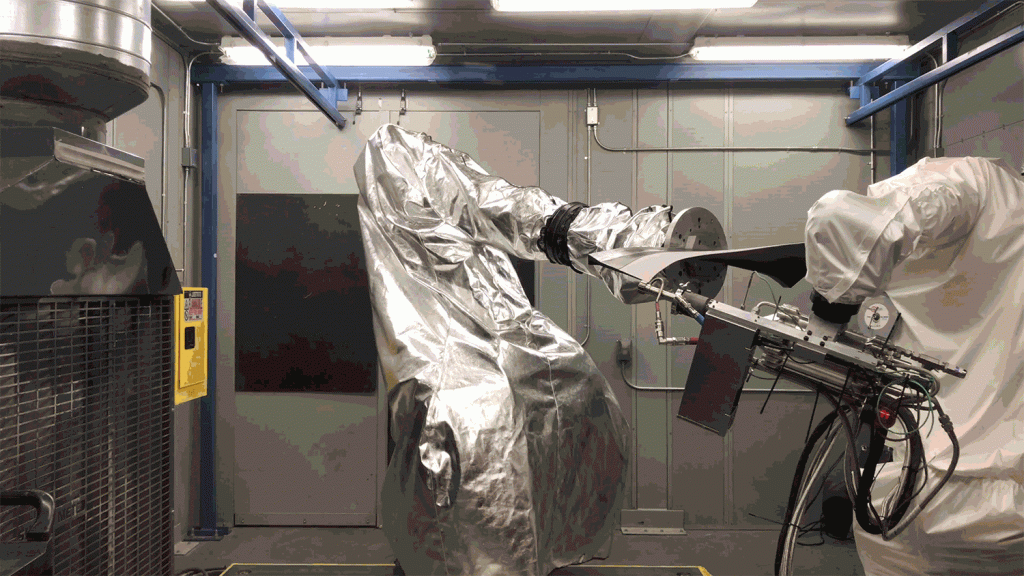Scientists at GE are combining gas dynamic “cold spray” deposition technology with robotics and machine learning to build and repair metal parts using additive manufacturing with greater precision.
GE scientists Leo Ajdelsztajn, Joe Vinciquerra, and their teams are further developing the cold spray technology so that metal parts can be 3D printed on a larger scale (unconfined by the build volume of a 3D printer), and with greater precision, gradually improved by artificial intelligence.
Cold Spray at supersonic speeds
Cold spray is a material deposition process that involves the acceleration of solid powder particles using a supersonic gas jet. The particles are fired at Mach 4 (four times the speed of sound) through a nozzle attached to a robotic arm. When the particles hit a substrate layer, they behave as a liquid, rapidly cool and form an atomic fusion bond with it.
Because cold spray technology does not use the same level of heat that welding does, a component can be more readily restored to its original condition using this technology. A new layer restores worn-out sections without changing the mechanical properties of the original. Precision is further achieved using a robotic arm, which can move around and hone in on a specific region.
The technology was used by engineers at Avio Aero (a GE Aviation company), to repair a gearbox on the GE90 engine, while a commercialised cold spray machine is now available in the form of SPEE3D’s LightSPEE3D 3D printer.

Refinements to Cold Spray at GE
Amongst the current problems facing cold spray deposition is the imprecision of the process and the consequent need to CNC mill parts afterwards for precision. This can cost a lot and waste material.
In October, Ajdelsztajn’s team added a second robotic arm to the process, with one arm holding the part to move it into a precise location, while the other arm deposits cold spray metal onto it.
The robots have 12 degrees of freedom of space, allowing it to tilt and pitch in different directions, and make the process more precise. The set-up has been used to successfully manufacture an airfoil for a jet engine.
Now, Joe Vinciquerra is incorporating his artificial intelligence and machine learning research into the cold spray technique. Vinciquerra explained to GE Reports that the research could be compared to “painting the same picture 40,000 times per year and analyzing the minute differences in each painting,” but with AI.
By applying post-analysis changes using AI, the robots will improve their performance and produce a better part or repair job using cold spray deposition.

Nominations for the second annual 3D Printing Industry Awards are now open. Let us know if this is one of the most innovative uses of 3D printing and make your selections now.
For more information on 3D printing and robotics, subscribe to our free 3D Printing Industry newsletter, follow us on Twitter, and like us on Facebook.
Featured image shows a cold spray apparatus and nozzle coating a component. Photo via Avio Aero.


